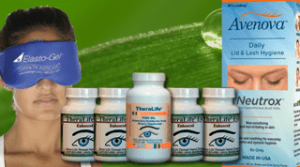Crusty eyelids are caused by blepharitis which causes swollen, itchy eyelids. It’s not usually serious and can often be treated by cleaning your eyelids every day.
Blepharitis is known to cause swelling of eyebrow lashes. The lashes are inflammatory at the base.
Blepharitis simply is a clinical term for eyelid inflammation. While everyone gets it sometimes, others get it often.
Eyelid skin problems.
Scarring can develop on your eyelids from long-term blepharitis. Or the eyelid edges might turn inward or outward
What are the signs and symptoms of crusty eyelids?
There are many symptoms of blepharitis. It may include some of these signs:
Blepharitis symptoms
The condition makes your eyelids red, itchy, and a little swollen. The bases of your eyelashes may look scaly. You might also notice:
- Feeling like something is in your eye
- A burning feeling in your eye
- Sensitivity to light
- Blurry vision
- Dry eyes
- Red eyes
- Watery eyes
- Crusty eyelashes when you wake.
People with blepharitis may experience a gritty or burning sensation in their eyes, excessive tearing, itching, red and swollen eyelids, dry eyes or crusting of the eyelids. For some people, blepharitis causes only minor irritation and itching.
Crusty eyelids Causes
Blepharitis can be a multiple issue that can be acute (symptom onset and duration between months or years). Chronic cases can occur through acute symptoms or rheumatism.
Autoimmune conditions can include skin cancers and vascular disorders as well as immune diseases such as cicatrizing conjunctivitis. Severe form of acute blepharitis may cause eyelid ulceration, which destroys eyelid structures and may cause serious infections like cellulitis.
Blepharitis can be caused by: a type of bacteria that lives on the skin a skin condition, such as seborrhoeic dermatitis the glands inside the eyelids not producing enough oil
Are there different types of crusty eyelids?
Blepharitis is caused primarily by the eye snout and brow.
What are other risk factors for developing crusty eyelids?
Aside from having rosacea, dandruff, dry eyes, can all cause blepharitis.
How will my eye doctor check for crusty eyelids?
. A doctor of optometry can determine the type of blepharitis based on the appearance of the eyelid margins
If you have blepharitis it can also be detected through eye tests. The physician will inspect the eye and eyelashes during this examination. It can be done by putting on an incredibly bright light.
Seborrheic dermatitis — dandruff of the scalp and eyebrows Infection
Are there different types of crusty eyelids?
Blepharitis is caused primarily by the eye snout and brow.
Meibomian blepharitis
People have a blockage of the oil glands in the eyelids, poor quality of tears and redness of the lining of the eyelids.
Posterior blepharitis
Posterior blepharitis affects the inner edge of the eyelid that touches the eyeball at the inner creases in the eyelids which pierce the eyelid.
Causes of posterior blepharitis
These signs are usually indicative of specific blepharitis types: staphyllococci, seborrheic ulcers, or meibomias.
Anterior blepharitis
Anterior blepharitis affects the outside of your eye, where your eyelashes attach to your eyelid. It usually happens because of bacteria on your skin or dandruff from your scalp or eyebrows. Allergies or mites (tiny parasites) may also cause anterior blepharitis, but this is rare.
Dandruff of the scalp and eyebrows (seborrheic blepharitis) also cause anterior blepharitis. These bacteria are commonly found on the face and lids, but if they become excessive, or the lid area reacts poorly to their presence, an infection may occur.
For staphylococcus blepharitis, we may prescribe antibiotics to deal with the bacteria and alter the oil composition of the eyelid oil glands.
Chalazion .
A chalazion can be caused by blepharitis. It is a hard, painless lump on the eyelid caused by a blocked oil gland. Often, this happens when you have a stye (infectious) that doesn’t go away. It can make your eyelid swell and turn red. A chalazion will often go away on its own.
Do poor hygiene habits cause crusty eyelids?
Poor hygiene can cause the development of “Blépharitis”. Hygiene can be one cause of blepharitis. Most people do not wash their eyes daily. Despite this risk, people should keep their eyelids and lashes clean.
The underlying causes of chronic blepharitis are not well understood. Blepharitis is not caused by poor hygiene.
Treating crusty eyelids with clinical procedures
Your provider may have newer processes at home.
Blepharitis Treatment
While blepharitis cannot be permanently fixed, its symptoms can be readily managed with daily eyelid hygiene measures and medications on a case-by-case basis. Common treatment approaches include: Eyelid hygiene Warm moist compresses.
Ask your eye doctor if any of these options are right for you:
Eye drops.
Your doctor may prescribe steroid eye drops to control redness, swelling, and irritation.
Medicines that fight infection .
If your blepharitis is caused by bacteria, your doctor may prescribe antibiotic eye drops, ointments, or pills.
Treating crusty eyelids by treating the root cause
Depending on the cause of your blepharitis, your doctor might recommend: Artificial tears Antibiotics , either as an ointment, eye drops, or a spray for your eyes, or as pills that you swallow.
Treatment of the cause of blepharitis, as it reduces the discomfort of the pain and discomfort associated with it. The recurrence of blepharitis occurs more often with skin conditions. Sometimes certain medication, like eye creams or eye drops can help.
Applying warm compresses can loosen the crusts. Then gently scrub the eyelids with a mixture of water and baby shampoo or an over-the-counter lid cleansing product. In cases involving bacterial infection, an antibiotic may be prescribed.
Eye drops for dry eyes – Lubrication
Dry eye is often treated at the same time as blepharitis. Chilled, preservative-free, artificial tears are often recommended and dosed four times per day in both eyes, unless otherwise directed by your doctor.
Antibiotics to treat blepharitis
You may also be prescribed antibiotic eye ointments — such as erythromycin, bitracin ophthalmic or Polysporin®. The treatment could be effective in eliminating bacterial infections or minimizing the symptoms. The persistence of cases could require antibiotics such as dihydrocycline or azithromycin.
Warm compresses
Warm compresses can help soften crust and loosen oily debris. Follow these steps: Wet a clean washcloth in warm (not hot) water . Wring it out and place it over your closed eyelids for 10 minutes. Wet it again as necessary to keep it warm. Keeping your eyelids clean may also ease symptoms. We highly recommend gel hot compress because it holds heat longer than a wet towel.
How to cleanse the eyelids
Use the cotton wand to rub the edge of ectopic eyelids and the areas in which glands reside to clean the area. Take 3 or 4 drops of warm water. The sanitary lid needs to be kept in good order two times a day. There are significant lifetime commitments involved, but they can return with the symptoms.
Home Remedies for crusty eyelids
Do not wear contact lenses while you have symptoms do not use eye makeup, especially eyeliner and mascara, while you have symptoms
Best crusty eyelids treatment- TheraLife





